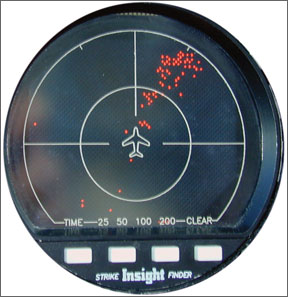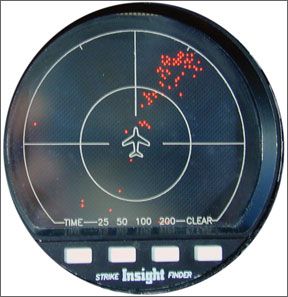As a committed subscriber I believe you have the best “bible” of information anywhere. Anyone who doesnt take advantage of
Regarding Aprils article on convective weather (On A Mission: Thunderstorms) I acknowledge the 20-mile principle in avoiding thunderstorms. However, after 35 years of Florida summers, flying in both VFR and IFR conditions, it is seldom that thunderstorms allow 20-mile avoidance, especially in the afternoon and evening. In non-turbo light twins and singles that cant climb high enough to “see” whats ahead, getting under the bases and using cockpit Nexrad provides a better choice of airports to run to when things look grim and a better visual picture to dodge mature cell activity.

288
Last summer while IFR at 8000 and working with Jax center to weave my way around the red blotches with Nexrad, I declined a suggested heading and was able to deviate around a cell another pilot flew directly into. After a couple of expletives from the other pilot, that controller said to me, “I dont know what you have, but its better than what I have.” I also must admit that I have never owned a Stormscope, but I wouldnt attempt many of these flights without Nexrad and the other related weather options.
I regularly fly 575-nm non-stop flights to and from southern Florida in the summer and this has worked for me, even for lots of pre-Nexrad years.
I wish I always had the luxury of the 20-mile option, but that hasnt been reality in my experience. Navigating upwind of the movement is crucial…and sometimes leaving it locked in the hangar is the only intelligent decision. None of us needs to experience Scott Crossfields misfortune. Every flight is a little different, each with its own lessons.
Jack Becker
Fort Myers, Fla.
Weve also had our share of Florida thunderstorms, along with those from other parts of the country. Getting underneath the bases is a decent strategy only when terrain and obstacles allow.
Turn Again
I have been an avid reader since 2002, before I began my flight training. I have been especially interested in the recent articles by Rich Stowell (March and April 2008) and feedback regarding turnbacks following power loss after takeoff.
On my private checkride in 2003, the examiner pulled off the power at around 700-800 feet agl on initial climb and asked what I was going to do. I responded we would be landing straight ahead. The examiner asked for the controls, promptly spun the plane around and said, “Lets see if you can get the plane on the ground.”
A couple of my friends who have flown for years and are experienced ATPs with thousands of hours in many different planes thought the examiner made a gross error in judgment by demonstrating that maneuver to a young pilot. With all the reading I have done I would have to agree.
Name withheld by request
Via e-mail
Wed agree, also.
Dissimilar
April 2008s
Squawk Box included a mechanics comment about corroded cowling rivets on a Mooney with a carbon fiber cowling. Aluminum rivets should never be used on a carbon structure for two reasons: First, metals high on the electromotive/galvanic scale, like aluminum, will be sacrificial to the carbon in the presence of moisture. Carbon laminates have the nobility of silver so almost any fastener other than titanium can corrode when in contact. The carbon and metal form a battery cell, and the metal gradually corrodes away.Second, no bucked rivets should ever be used because the radial swelling of the rivet will fracture fibers adjacent to the hole and reduce the bearing capability of the joint. That goes for interference fit fasteners, too.
Usually, fasteners through carbon laminates are clearance fit titanium or A286 stainless steel. And any aluminum part in contact with a carbon structure should have a localized layer of fiberglass or equivalent to electrically isolate the materials and prevent corrosion.
Bob Hartunian
Fawnskin, Calif.




